Do not be fooled by 877-694-1850 pop-up
You may stand a high chance to fall in trap of 877-694-1850 tech support scam if you always toe the line to protect personal computer and information security. Please be attentive and distinguish it from real system warning while it tells you that you need to call the number to get tech support to keep your device safe. Pretending to be a warning of system errors or malware attacks, this nuisance can drive you nuts with non-stop webpage occupation and screen locking.
Do not be taken in! And you should not make the call as the pop-up asks. Not to mention pay for the so-called service and allow anyone at the end of the phone to control your computer remotely.
You have sound reasons for 877-694-1850 scam removal
Firstly, 877-694-1850 pop-up is the initiator causing web browser dysfunctions such as homepage hijacking, webpage redirecting, sudden freeze-ups and sluggish page downloading. Secondly, it tends to trick you into paying for untrustworthy service/products, which might actually put system health and data security in real danger. Finally, if not deleted timely, it may seize every chance to run interference for other PUPs or even drive-by download threats, with which your computer can be more vulnerable.
Usually, the bombardment of 877-694-1850 pop-up Ads and malicious activities behind won't stop unless you locate and and uproot the adware or riskware bundled by this phishing scam.
Plan A: Remove 877-694-1850 pop-up Manually from Windows/Mac OS
Plan A: Remove 877-694-1850 pop-up Manually
Step 1. End malicious processed generated by this non-sense
On Windows Computer: Press key combination (Ctrl+Alt+Del) to launch Task Manager

On Mac OS:
Choose Force Quit from the Apple menu, or press key combination (Command + Option + Esc) to open the Force Quit Applications window to do this.
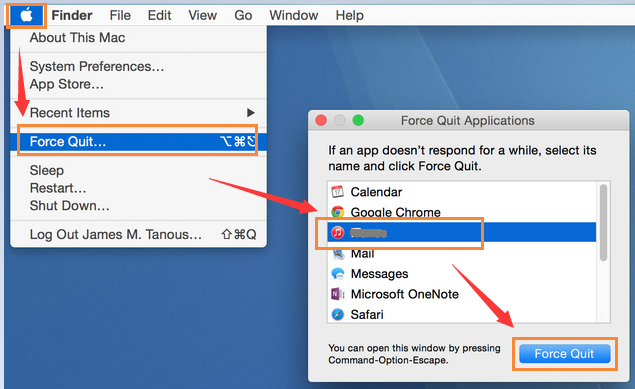
Step 2. Uninstall webpage scam related or unwanted application that bundled with this Ad
On Windows Computer:
Win 7: Go to the “Start” menu, select “Control Panel”. Locate “Programs”. If there is anything related to tech scam related program on the list of your Programs, then select it and uninstall it.
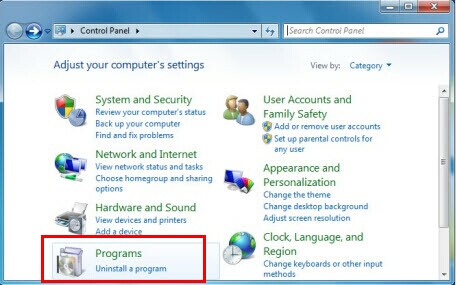
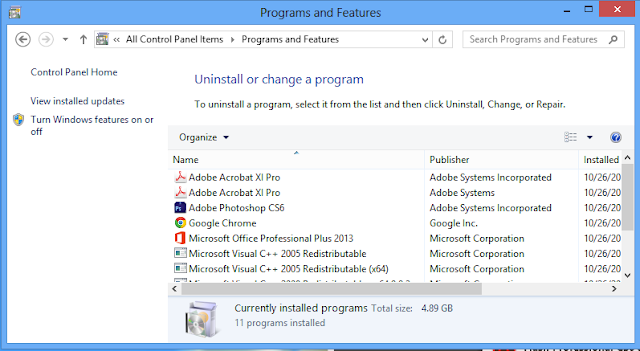
Win 10: Go to the “Start” menu, select “Settings” and then “System”; Click on “Apps & features”, if there is tech scam related item, select and uninstall it.


On Mac:
Open the Applications folder in the Finder (or go to the Menu Bar, open the “Go” menu, and select Applications in the list), search for Suspicious application, and then drag it to the Trash (in the dock)
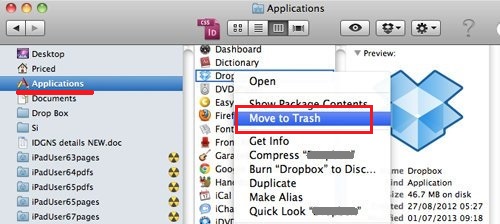
Step 3. Reset your affected browsers one by one
Google Chrome:
Click the Chrome menu on the browser toolbar and select Settings:
a) Scroll down to the bottom of chrome://settings/ page and click Show advanced settings
b) Scroll down to the bottom once again and click Reset Settings

Internet Explorer:
a) Click Start, click Run, in the opened window type "inetcpl.cpl".
b) Click "Advanced" tab, then click Reset.

Mozilla FireFox:
Open Firefox->> choose Help ->>choose Troubleshooting information
a) Click on Reset Firefox. Choose Reset Firefox again to make sure that you want to reset the browser to its initial state.
b) Click Finish button when you get the Import Complete window.
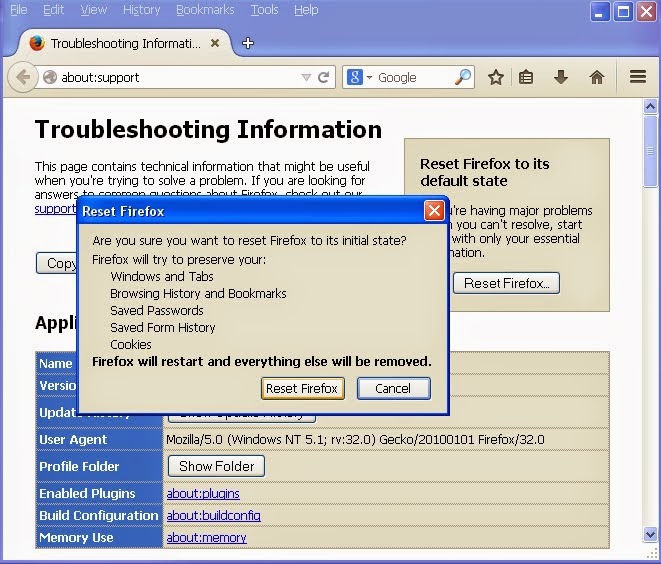
Safari
a) Open your Safari browser from the dock.
b) Click on Safari in your Safari menu at the top of your screen.
c) A drop-down menu will now appear. Choose the option labeled “Reset Safari…”
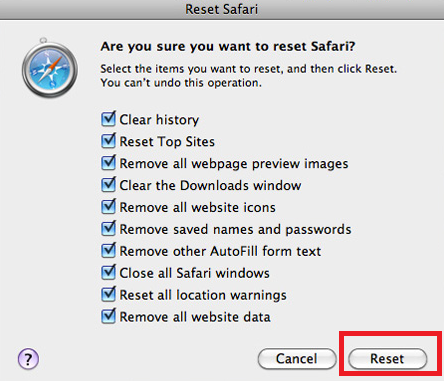
Step 4. Locate junk files and then delete them
On PC: find and delete associated files from C Drive
%ProgramData%\ %CommonProgramFiles%\*.exe %windir%\SeviceProfiles\LocalService\AppData\Local\Temp\random.tlb
On Mac: a) Access hidden Library folder by hold down the Option key while looking at the Go menu in Finder.
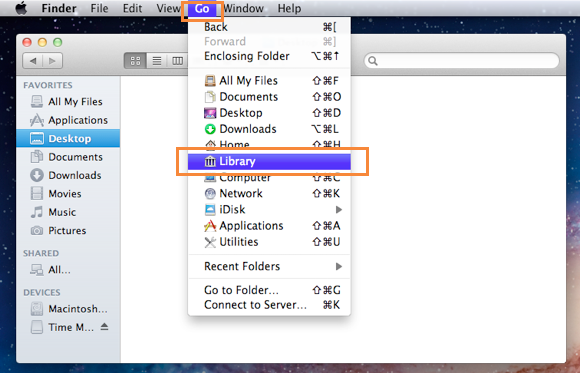
b) Delete related files. You need to check numerous system folders for obscure files such as:
/System/Library/Frameworks/v.framework /System/Library/Frameworks/VSearch.framework /Library/PrivilegedHelperTools/Jack /Library/InputManagers/CTLoader/ ~/Library/Internet Plug-Ins/TroviNPAPIPlugin.plugin /Applications/SearchProtect.app /Applications/InstallMac
(Warning: Care must be given when try this way. Don't empty your Trash until you've determined that everything is working OK, in case you need to restore something you deleted by accident. If you are not skillful enough to finish the above manual removal processes on your own, you could use a recommended malware security suite to help you out with efficiency.)
Plan B: Remove 877-694-1850 pop-up Automatically from Your Windows Computer
SpyHunter from Enigma Software Group LLC having been certified by West Coast Labs’ Checkmark Certification System could be a wise choice:
|
Step 1. Click the following icon to download malware removal tool SpyHunter
Step 2. Run SpyHunter to scan for this browser hijacker
Click "Start New Scan" button to scan your computer

Step 3. Get rid of all detected items by clicking "Fix Threats" button
Plan C: Clean up 877-694-1850 pop-up Automatically from Your Mac with MacKeeper
MacKeeper has impressive features:
|
Step 1. Download MacKeeper to your Mac.
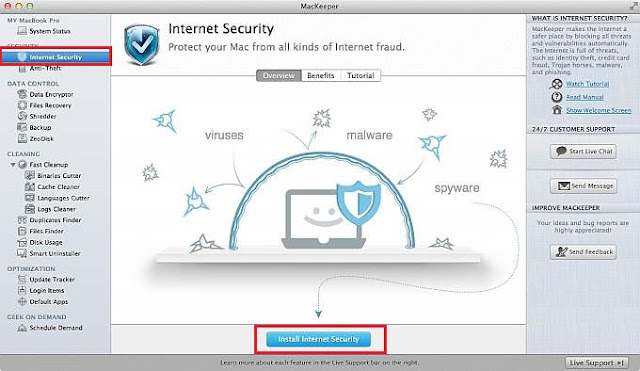
Step 3. Scan your Mac and fix the issue.
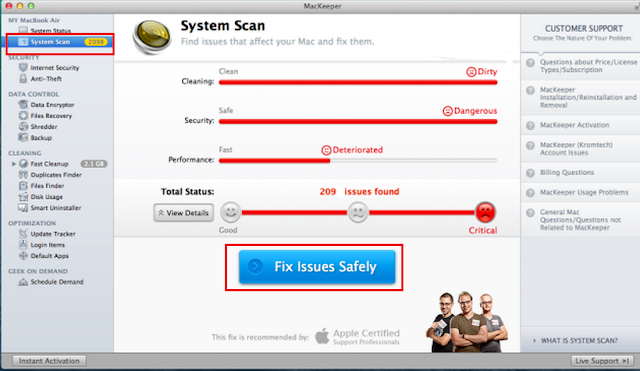
Anything taking a hand in your browsing and messing up things like 877-694-1850 pop-up should be eliminated in a timely fashion. If you are puzzled by the manual removal steps, you could feel free to get assistance with SpyHunter (For Win OS) or MacKeeper (For Mac).
(The recommended free scanner is only for malware detection. If it detects the target on your computer, you could think about buying the product and activating the automatic removal function to get rid of the target efficiently!)



No comments:
Post a Comment